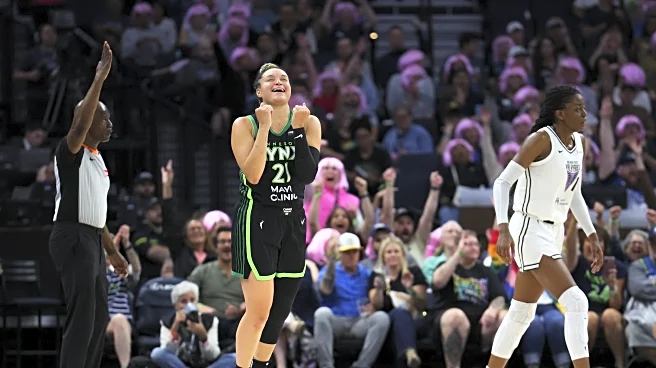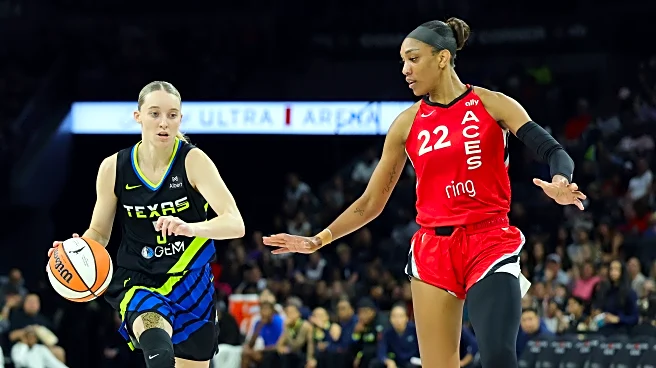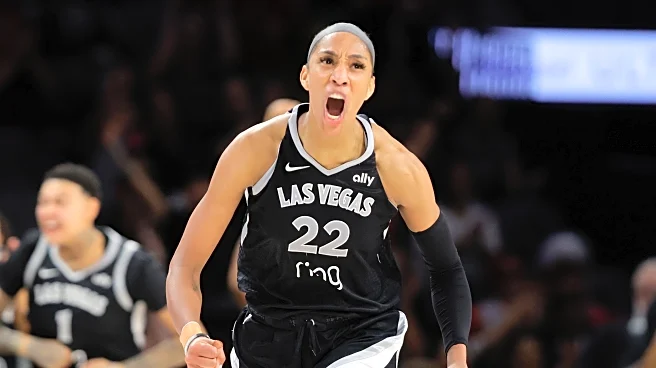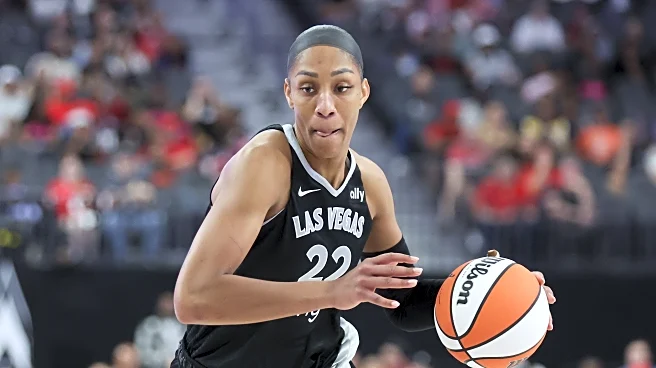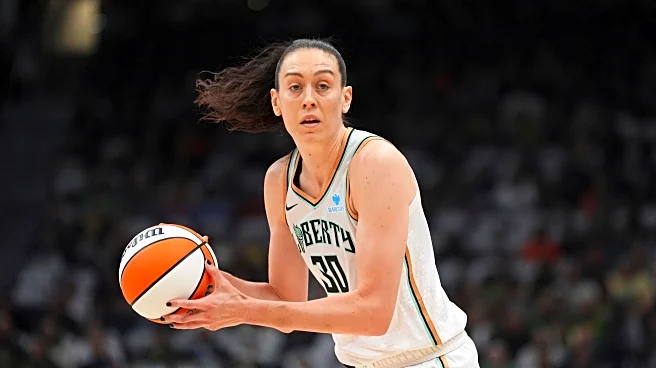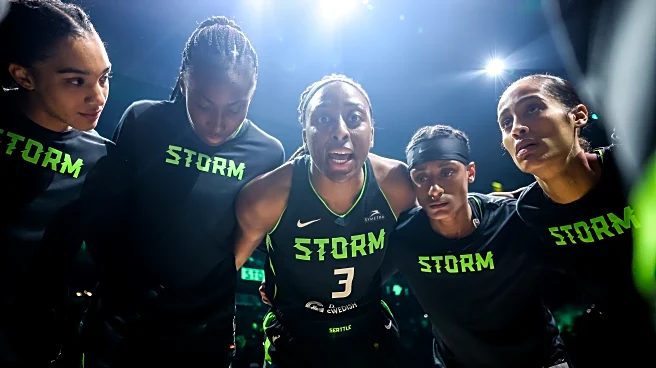What's Happening?
The All-WNBA First and Second Teams have been announced, highlighting the top performers in the league. The First Team includes Kelsey Mitchell from the Indiana Fever, Allisha Gray from the Atlanta Dream, Napheesa Collier from the Minnesota Lynx, A'ja Wilson from the Las Vegas Aces, and Alyssa Thomas from the Phoenix Mercury. The Second Team features Paige Bueckers from the Dallas Wings, Nneka Ogwumike from the Seattle Storm, Jackie Young from the Las Vegas Aces, Aliyah Boston from the Indiana Fever, and Breanna Stewart from the New York Liberty. The selection process considered various metrics such as Player Impact Estimate (PIE), true shooting percentage, and team success, with a focus on players from playoff teams.
Why It's Important?
The announcement of the All-WNBA Teams is significant as it recognizes the top talent in the league, influencing player reputations and future contract negotiations. The selections reflect the players' contributions to their teams' successes, with a strong emphasis on those who have led their teams to the playoffs. This recognition can enhance players' marketability and career opportunities. Additionally, the process highlights the competitive nature of the league, where even high-performing players from non-playoff teams, like Paige Bueckers, can be acknowledged for their individual excellence.
What's Next?
The announcement sets the stage for further discussions on player performance and team strategies as the WNBA moves into the postseason. Teams with multiple selections, such as the Las Vegas Aces and Indiana Fever, may leverage this recognition to boost team morale and fan engagement. The selections may also influence future trades and team compositions as franchises aim to build around recognized talent. Fans and analysts will continue to debate the merits of the selections and omissions, potentially impacting future voting criteria and processes.
Beyond the Headlines
The selection process for the All-WNBA Teams underscores the evolving metrics used to evaluate player performance, such as PIE and true shooting percentage. These advanced statistics provide a more comprehensive view of a player's impact beyond traditional scoring metrics. The emphasis on players from successful teams highlights the league's focus on rewarding winning contributions, which may influence how players approach their roles and responsibilities on the court. This trend reflects a broader shift in sports analytics, where data-driven insights are increasingly shaping player evaluations and team strategies.


